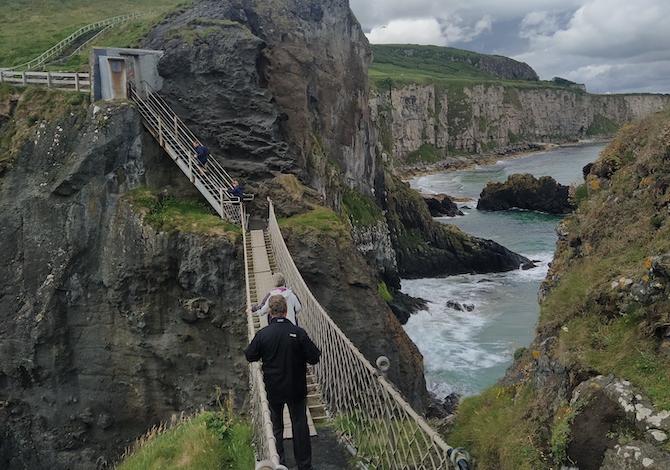The coast of Northern Ireland is a fairy tale and there are many walking routes to discover it. Do a trekking in Irlanda del Nord it is easy, perhaps by following the Causeway Coastal Route which leads from Belfast to Derry following the magnificent Atlantic coast.
It is an itinerary of 193 kilometres, which can be done in about 7-10 days, or only partially by choosing the most scenic areas. We traveled it in the summer (end of June-beginning of July) and we explain how to do it and which are the unmissable places.
The Northern Ireland Coast Walk, amazing journey from Belfast to Derry
There is an ideal itinerary for those who want to walk the coast of Northern Ireland: the Causeway Coastal Route. It is the route that the whole thing of the country follows from Belfast to Derry. I am 193 kilometers showcasing the best of Ulster, an immersion in nature and time in the midst of rocks of 500 million years ago. It takes 7-8 days, depending on the detours you want to makeperhaps following the Game of Thrones thematic itinerary.
What to see in Northern Ireland
Northern Ireland is an amazing destination. After decades of riots that have limited tourism, it’s time for rediscovery: a country in full cultural renaissance, full of lively cities and extraordinary nature.
There is something for everyone, from the itineraries linked to the TV series of Game of Thrones (mostly filmed here) to those with a political-social theme, to the naturalistic ones of the cliffs of Antrim.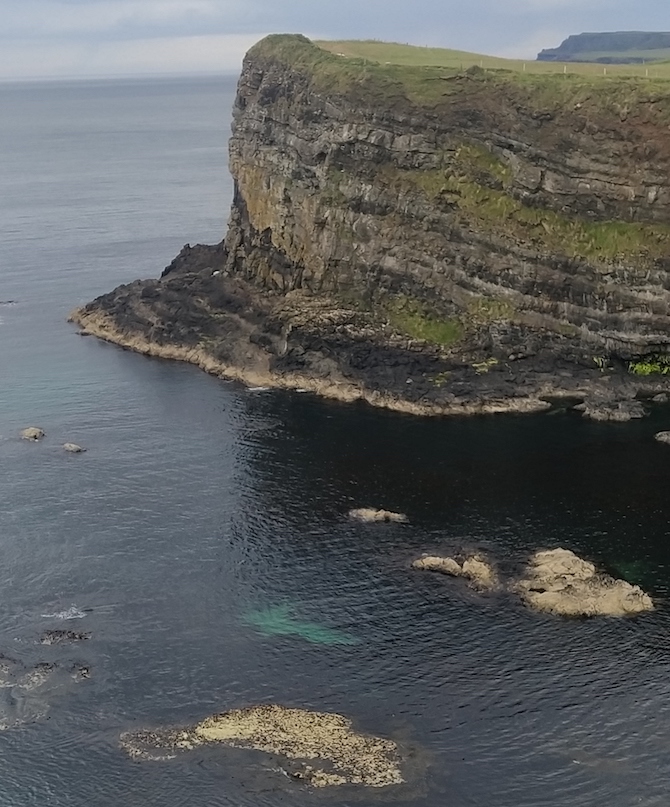 And Northern Ireland tour it can be done on your own, by renting a car or walking along the coast. In a few kilometers there is a concentration of marvels that has few equals in Europe. Sheer cliffs, the legendary Giant’s Causewayiconic castles, huge beaches, valleys with ancient geology, micro fishing villages, pubs full of music and dark beer.
And Northern Ireland tour it can be done on your own, by renting a car or walking along the coast. In a few kilometers there is a concentration of marvels that has few equals in Europe. Sheer cliffs, the legendary Giant’s Causewayiconic castles, huge beaches, valleys with ancient geology, micro fishing villages, pubs full of music and dark beer.
Read also
Trekking Irlanda del Nord: la Causeway Coastal Route
The CCR is well signposted along all 193 km: these are paths that they follow the paved road parallel, usually very little frequented.
In many places you walk on dirt roads inside the beaches and on the ups and downs of the glens, the narrow valleys that descend towards the sea, such as the majestic one of Ballycastle.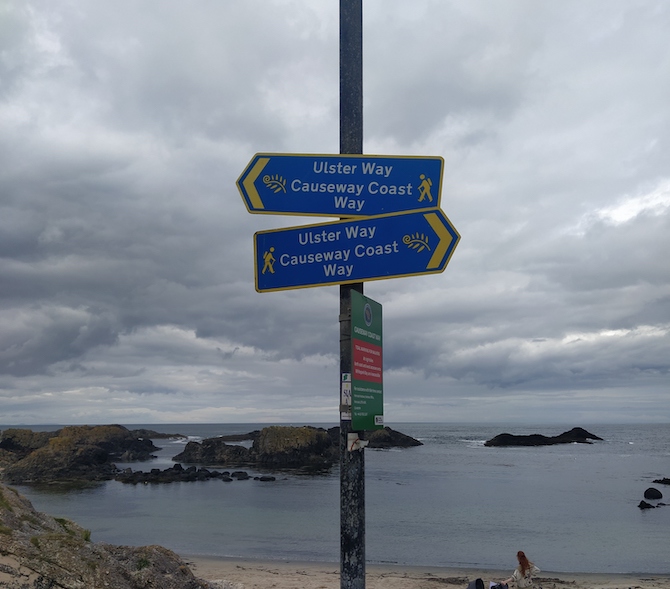 You are between the emerald green of the island and the deep blue of the ocean, between small villages with old world charm (Cushendun and Carnlough) and more touristic towns (Portstewart and Portrush). you sink your feet into the very soft meadows populated by sheep and cows, then you pass by bays with amazing colors, almost Caribbean (e.g. that of Carrick a Rope).
You are between the emerald green of the island and the deep blue of the ocean, between small villages with old world charm (Cushendun and Carnlough) and more touristic towns (Portstewart and Portrush). you sink your feet into the very soft meadows populated by sheep and cows, then you pass by bays with amazing colors, almost Caribbean (e.g. that of Carrick a Rope).
Northern Ireland coast, the stages on foot
The Causeway Coastal Route è a concentration of highlights to follow in 7-8-9 stages. The watershed is Glenarriff, where the landscape changes and becomes more dramatic and unforgettable (before it is a bit monotonous at times): you go from fairly flat bays to deeper fjords and worked by erosion. A world of the most bizarre and imposing cliffs, where basalt is combined with sandstone, lighting up colors and shapes.
Ecco our favorite places along the itinerary.
Belfast
The capital of Northern Ireland is a vibrant city, in full cultural explosion. Art gallery, old and new pubs, sophisticated restaurants, intriguing murals that tell the story of the city. But you can also see history by crossing (even with guided tours) the contiguous and enemy neighborhoods of Falls road e Shankill roadwhere the dead of the riots are celebrated in every corner.
Now peace has brought development, whose symbol is the completely redesigned and welcoming harbor front, where the gleaming building stands Titanic Belfastwhich houses the ultra-modern and interactive museum dedicated to the Titanic and the city that built it: not to be missed.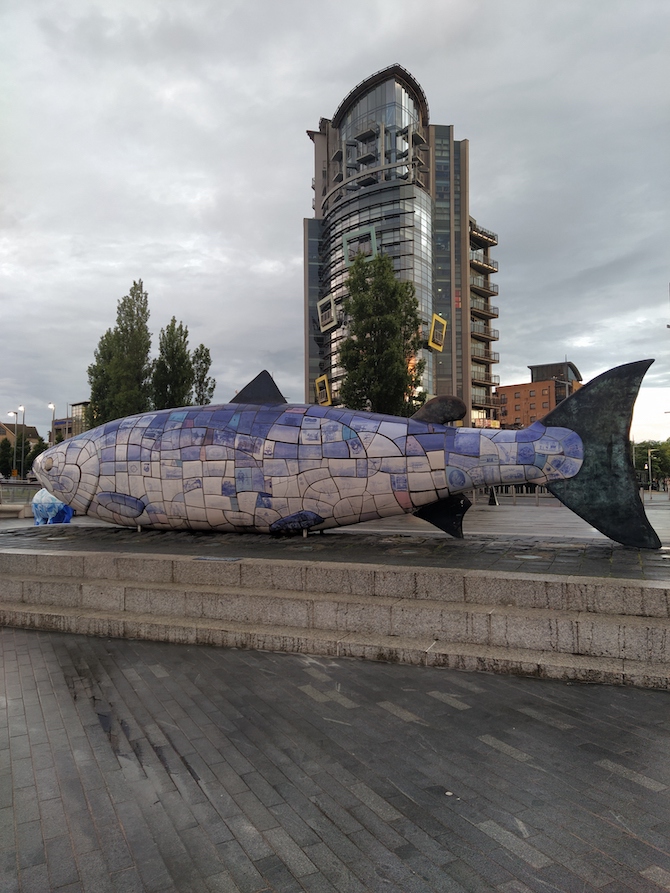
The Gobbins
A spectacular walking route carved out of the basaltic rocks. A guided experience through hanging points, tunnels and caves that tell the story of this tail-shaped Islandmagee peninsula. A prehistoric world of stratified basalts, where nature enjoyed playing with different shapes and colors. North Belfast.
Carnlough Harbour
And old-fashioned marina in the fishing village. An idyllic place for a break during the long walk on this stretch of the CCR.
Glenarm
Another typical town, with a castle that deserves a visit: it has a large park with refreshment points and recreational activities, and above all the walled garden, a well-kept garden designed in a style that mixes English with Italian, really worth seeing.
Cushendun
Here is an intricate and mysterious cave by the sea, location of a set of Game of Thrones. Once arrived you walk on the algae, in a timeless panorama. Just before that is a quaint village of white houses.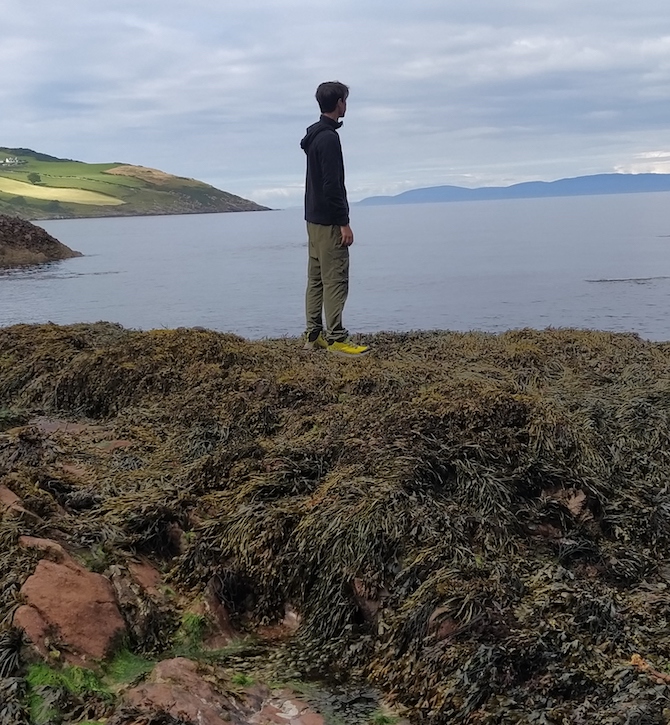
Glenarrif Forest
The glen that takes us into the geological wonders of the Antrim coast is part of a park that extends inland, with a dense forest where there are many paths for walkers. Between streams and waterfalls you can meet many squirrels and woodland animals.
Torr Road
From Cushendun to Ballycastle, after Glengarrif junction, traveling on the Torr Road, perhaps the most beautiful in all of Northern Ireland. An up and down with steep sections that takes you seamlessly from a glen to a Caribbean bay (like Marlough’s), where there are only sheep to accompany you. A total experience for those who love the thrill of the outdoors. And when it passes from the clouds to the sun, the visions of the panorama send you into a kind of ecstasy.
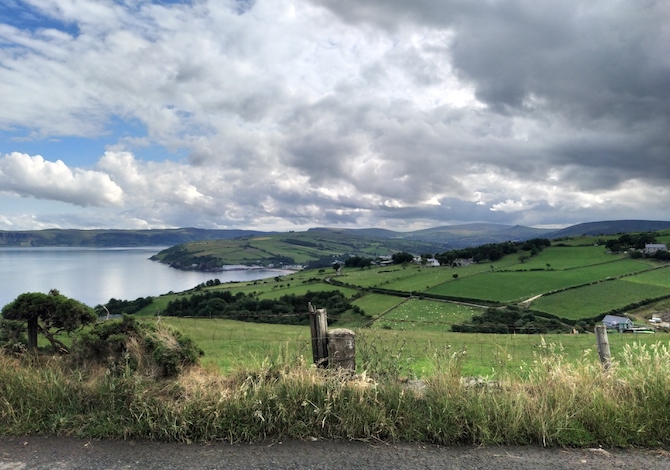
The Dark Hedges
Not quite on the coast: it’s an unmissable detour for Game of Thrones lovers. From Ballycastle go south (there is also public transport) towards thehe tree-lined street made famous by the TV series. Several trees have been blown down by a recent storm but the path where the beech trees converge in a ghostly tunnel still has a strong appeal.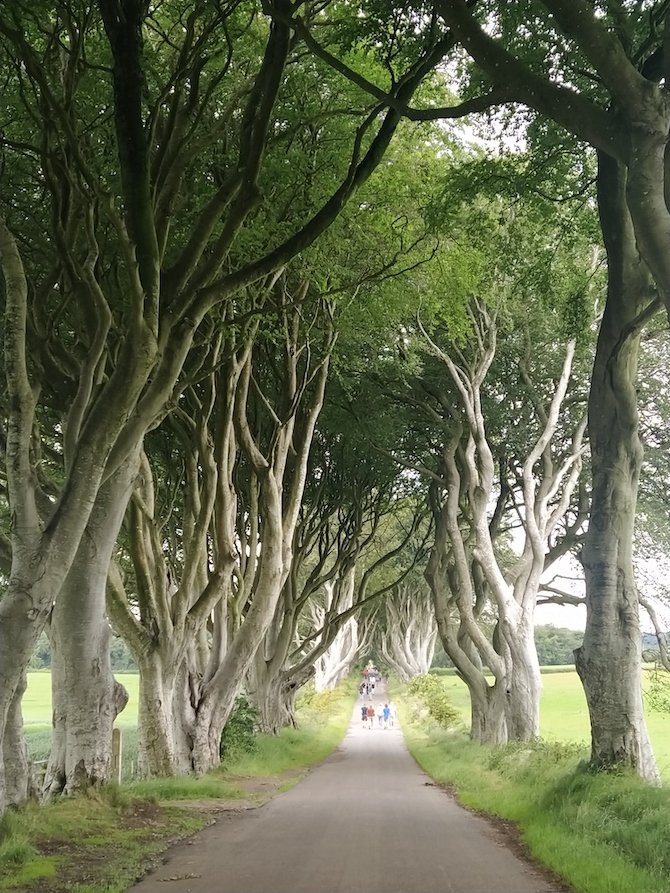
Ballintoy
I had to choose one place above all: Ballintoy Harbour. The emblem of the Northern Ireland coast: a micro-port of ancient origins, all in stone, immersed in a panorama of bizarre reefs, rock pyramids covered with green grass, black rocks jutting out everywhere, a bay drawn with the compass in which to relax, the typical white house where you can stop and eat fresh fish dishes. 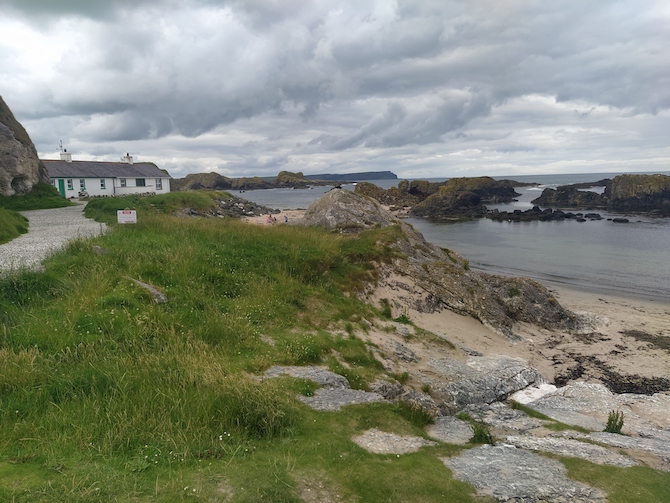
Carrick the Network
Close to Ballintoy, in the middle of nowhere, the islet of Carrick appears, separated from the coast by only 20 metres. Centuries ago fishermen built a rope bridge to reach it and today it is possible to cross it one of the best experiences to have in Northern Ireland.
Beyond the thrill of the passage at a height of 30 meters (which doesn’t last long and is truly harmless), there is the possibility of perching on this grassy rock for a half day of relaxation and birdwatching. Here thousands of puffins, seagulls and other birds nest, on sheer cliffs above the turquoise sea.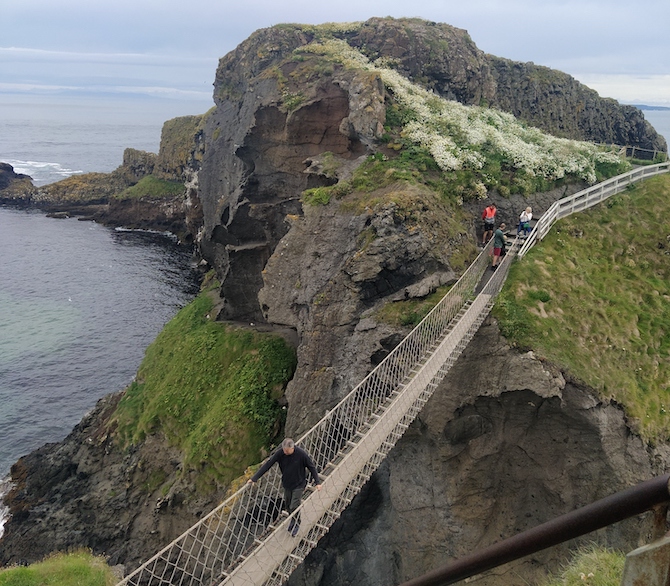
Giant’s Causeway
I national monument of the whole island of Ireland: the Giant’s Causeway is a large basalt cliff in which nature has shaped thousands of polygonal columns that seem designed by an architect. After the interesting information center which tells the history, legend and geology behind the Giant’s Causewaysgo down a narrow path between bays and glens, until you meet the incredible rock formations. But you can continue with a long trek.up to the next tip, where there are other impressive formations.
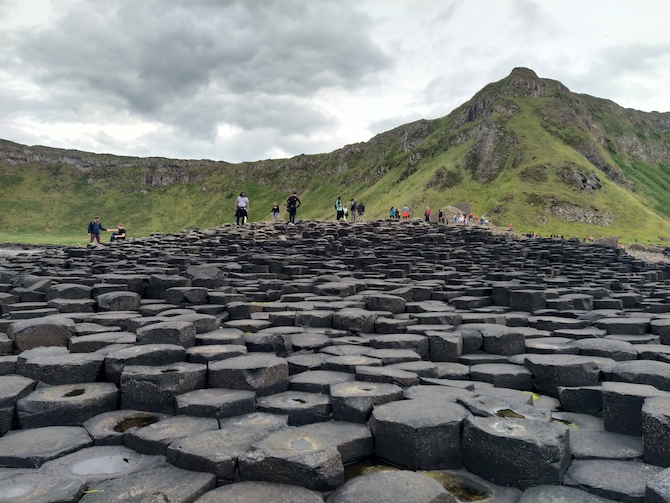
Dunluce Castle
The ultimate castle. Dunluce, built on a rock outcrop in the 13th century, is a dream castle, from Scottish War Saga. In fact, he belonged to the Scottish family of the MacDonnels who dominated the island. It’s all stone, roofless, surrounded by bright green lawns with visions of the rough sea. Insanely impressive at sunrise and sunset.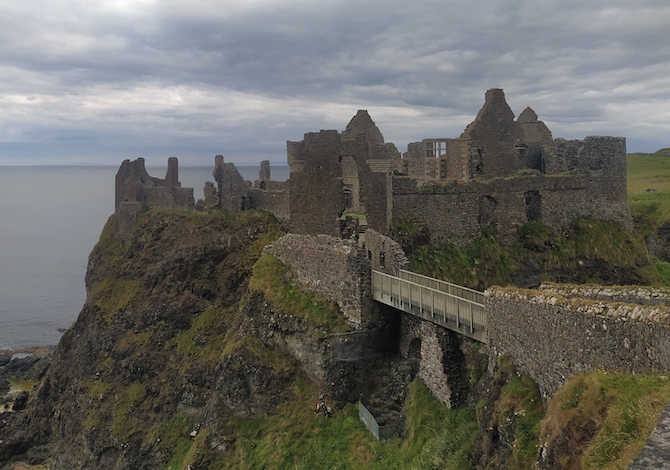
Benone Beach
Miles of endless beach. Between Portstewart and Magilligan Point one is staged long curve of very deep golden sand, where you can also enter and drive around. It is dominated by Musenden Temple, another sacred place for Game of Thrones fans.
Derry
The final stop on the CCR is the ancient city of Derry/Londonderry. If the stretch of route that reaches us does not cross particularly suggestive places, the walled city deserves a stop. It feels all the warlike history of Ulster, from the seventeenth-century fortifications to repel enemies to the Bogside district, home to the toughest Catholic militancy, which still proclaims itself ‘Free Derry’, as the mural that welcomes you says.
Derry is pure charm, like all of Northern Ireland.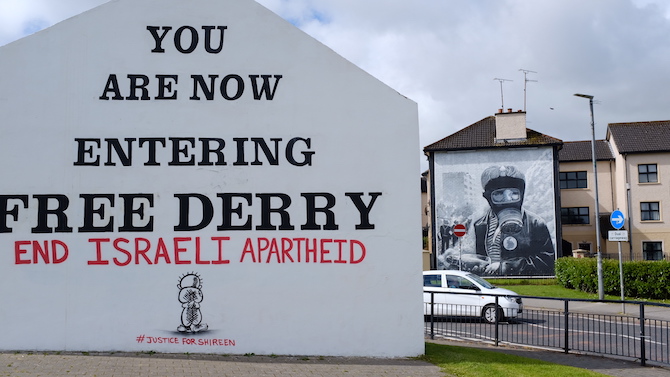
Read also
When to go hiking in Northern Ireland
Yes, it’s easy to encounter rain, wind and cool. But you know it and leave prepared. And in the end they don’t prevent you from following the program of the journey, because the rain is often fine and fast, and the wind is never excessive (the coast of Ulster is more sheltered than that of Eire, Ireland). 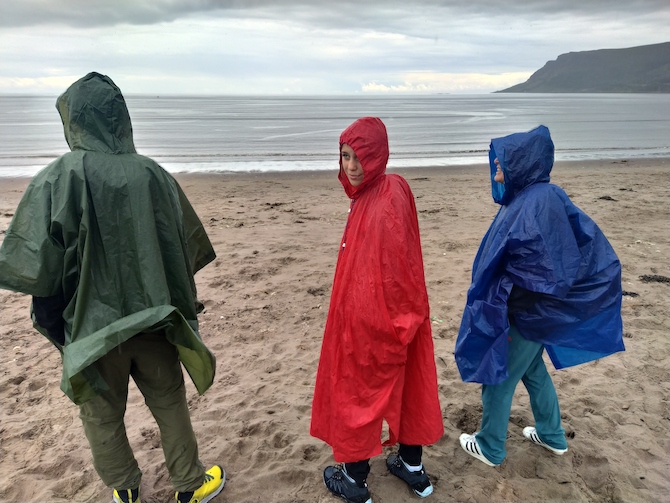 The weather conditions are pretty constant which ultimately makes the Causeway Coastal Route a route you can take from March to November, practicable longer throughout the year than many other European trails.
The weather conditions are pretty constant which ultimately makes the Causeway Coastal Route a route you can take from March to November, practicable longer throughout the year than many other European trails.
The months from December to February are not recommended due to the short days and the risk of heavy rains. It’s great in the summer: it can also be quite hot, but never enough to prevent you from walking.
Classic layered clothing: hiking shoes and hiking pants, t-shirt and waterproof jacket, buff, water bottle, backpack with rain cover.
Photo Martino De Morie. Ireland.com
Advertising
